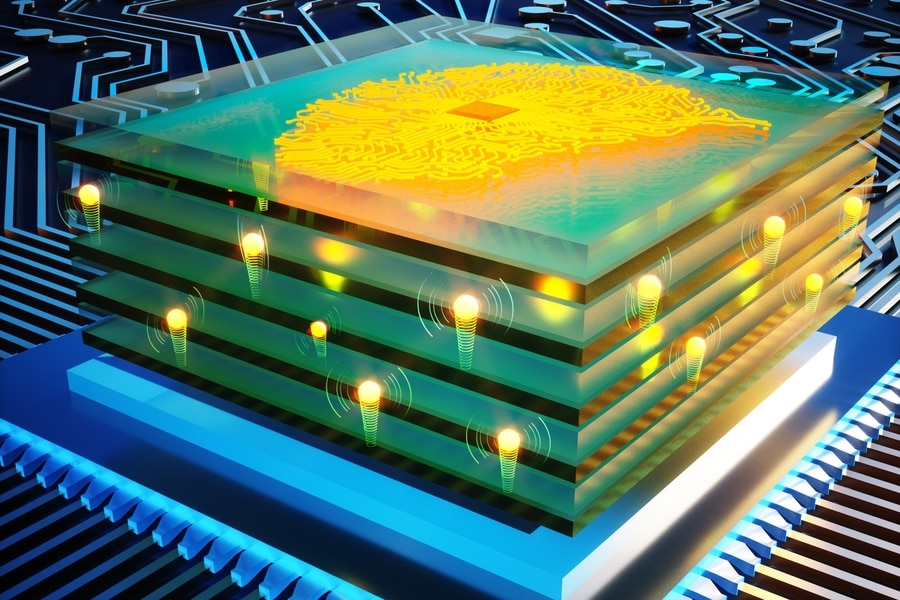
Image showing ultra-fast photonics powering an analog deep-learning processor. (Image Credit: Credit: MIT/Ella Maru Studio, Murat Onen)
Creating something in our image. Not the first time we've heard about this.
Artificial synapses have been under development for years by researchers eager to mimic the human brain's performance. MIT researchers developed an artificial synapse, replicating a human brain's ability to move ions, drastically outperforming biological types. The device's ions can move at higher speeds due to the material's ability to withstand strong electric fields. Overall, this device is 10,000 times faster and 1,000 times smaller than biological synapses.
"The speed certainly was surprising," said research leader Murat Onen. "Normally, we would not apply such extreme fields across devices in order to not turn them into ash. But instead, protons [which are equivalent to hydrogen ions] ended up shuttling at immense speeds across the device stack, specifically a million times faster compared to what we had before."
Analog computing is a potentially rewarding approach for neuromorphic engineering, which involves designing components for information processing via internal physics exploitation. This creates a highly efficient approach compared to performing complex logic operations. Research has been centered around memristors, replicating the process that increases or decreases a biological neuron's strength, depending on their communication frequency. Such devices could help produce networks that have the same properties as biological neural networks.
In their paper, the researchers explain that long-term data storage components are suitable candidates for performing regular state transitions to boost an artificial neural network's connection. The physical properties that support lengthy retention are not favorable to high-speed transition types. So the researchers designed a component that regulates conductivity by inserting or removing photons in its phosphosilicate glass (PSG) channel. As a result, this process can replicate biological synapses' performance, in which it relies on ions for signal transmission across the gap between two neurons.
The newly-developed synapse also has two input and output terminals. An additional third terminal applies an electric field to stimulate protons so they can flow into the PSG channel. If the channel has more protons, then it makes it more resistive. The team originally designed the component in 2020, which had incompatible materials for chip designs. Using PSG instead means the device can switch at an improved speed. This mainly has to do with the nano-sized pores making it possible to achieve a higher movement speed for the protons. Plus, it can tolerate extreme electric field pulses.
Applying strong electric fields results in a dramatic proton speed boost and better performance compared to biological synapses. This device operates at 10V in 5 nanosecond pulses, which means it runs 10,000 times faster than a biological synapse. Even more impressive, the device is only nanometers across, making it 1,000 times smaller than the biological types.
However, its three-terminal configuration might pose a challenge for running certain neural networks. Protons are typically added through hydrogen gas, potentially leading to scaling-up issues.
Is it really worth exploring a copy of the human mind?
Have a story tip? Message me at: http://twitter.com/Cabe_Atwell
